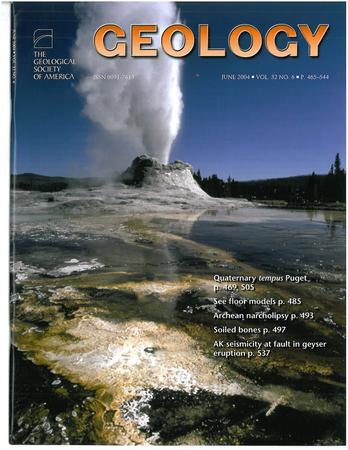中至高温粘土驱动白云化:热液实验证据
IF 4.6
1区 地球科学
Q1 GEOLOGY
引用次数: 0
摘要
白云岩的形成在沉积地质学中一直是一个有争议的话题,特别是关于自然条件下白云岩形成的机制。虽然微生物过程已经得到了很好的研究,但诸如粘土矿物等非生物因素的影响却鲜为人知。本研究采用80 ~ 250℃的水热反应器实验,考察粘土矿物在压实后白云化中的作用。结果表明,蒙脱石和伊利石通过其表面的高负电荷提供成核位点,帮助Mg2+脱水,从而有效地促进白云化。相比之下,高岭石和迪基石由于其电荷中性而效果较差。在方解石-高岭石混合物中,当高岭石部分转化为蒙脱石时,白云石在200℃形成,但在250℃时由于dickite的形成而被抑制。仅含方解石的样品几乎没有白云石的形成,突出了活性粘土的作用。白云化通过两种机制发生:(1)方解石完全溶解后白云石成核;(2)再结晶后Mg逐渐掺入。这些发现支持了粘土催化白云化是古泥质碳酸盐岩和碎屑-碳酸盐岩混合体系中重要的非生物途径。本文章由计算机程序翻译,如有差异,请以英文原文为准。
Clay-driven dolomitization at moderate to high temperatures: Evidence from hydrothermal experiments
Dolomite formation remains a debated topic in sedimentary geology, particularly concerning the mechanisms driving its precipitation under natural conditions. While microbial processes have been well studied, the influence of abiotic factors, such as clay minerals, is less understood. This study uses hydrothermal reactor experiments at 80−250 °C to examine the role of clay minerals in post-compactional dolomitization. Results show that smectite and illite effectively promote dolomitization by providing nucleation sites and aiding Mg2+ dehydration through their highly negative surface charges. In contrast, kaolinite and dickite were less effective due to their charge neutrality. In calcite-kaolinite mixtures, dolomite formed at 200 °C when kaolinite partially converted to smectite but was inhibited at 250 °C due to dickite formation. Samples containing only calcite showed little to no dolomite formation, highlighting the role of reactive clays. Dolomitization occurred through two mechanisms: (1) complete calcite dissolution followed by dolomite nucleation, and (2) recrystallization with progressive Mg incorporation. These findings support clay-catalyzed dolomitization as a significant abiotic pathway in ancient muddy carbonates and mixed clastic-carbonate systems.
求助全文
通过发布文献求助,成功后即可免费获取论文全文。
去求助
来源期刊

Geology
地学-地质学
CiteScore
10.00
自引率
3.40%
发文量
228
审稿时长
6.2 months
期刊介绍:
Published since 1973, Geology features rapid publication of about 23 refereed short (four-page) papers each month. Articles cover all earth-science disciplines and include new investigations and provocative topics. Professional geologists and university-level students in the earth sciences use this widely read journal to keep up with scientific research trends. The online forum section facilitates author-reader dialog. Includes color and occasional large-format illustrations on oversized loose inserts.
 求助内容:
求助内容: 应助结果提醒方式:
应助结果提醒方式:


